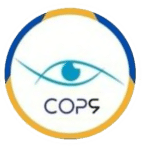
Your vision does not depend solely on your eyes. Your eye perceives information, which is processed by different visual areas in the brain. However, these specific pathways can be disrupted, causing neurovisual disorders. Through clear and precise explanations, discover in this article the functioning and specificities of the visual areas, and at the same time increase your awareness of neurovisual disorders.
What are “visual areas”?
The visual areas are located in the primary visual cortex of our brain, they are located at the back of our occipital lobe. They allow our brain to build a precise image of what surrounds us from the reception of the retina.
In order to process the information perceived by the eye, the brain will rely on the visual message received by the retina. It transforms it into a nervous message, of an electrical nature. This message then passes through the optic nerve to the primary visual cortex.
The visual areas have been broken down into two parts. It is possible, thanks to medical imaging methods and clinical research, to define rather precisely each location and their given functions.
The primary visual area corresponds to the entry of visual messages in the brain. It is the elementary visual sensations that are analyzed here. The secondary visual areas are associated with the shapes, colors and movements of the observed element. These areas are permanently and simultaneously exchanging messages with other brain areas in order to obtain the global visual perception of what surrounds us
What are the signs of neurovisual disorders?
The symptoms of neurovisual disorders can be difficult to spot because they are invisible. In order to spot them, it is important to be constantly vigilant: at home, at work, at school, being attentive is the key to spotting visual disorders.
For a child, the neurovisual disorder is characterized by having difficulty in staring or following a moving subject with their eyes. Clumsiness and difficulty performing coordinated movements may also be symptoms of this disorder. Their behavior during numerous visual simulations can also be an important key to the analysis.
In the school context, it is noticeable that the child has an aptitude for oral expression, while writing is a more complex task. They may have difficulty finding their way around a sheet of paper as well as the blackboard, and are slow to complete assignments, as well as having poor posture. This leads to poor academic performance.
Why have a neurovisual check-up with your orthoptist?
A neurovisual examination is performed by an orthoptist, a professional who studies the sensory and motor relationships between the two eyes. This check-up is to be completed by a functional examination, the objective of which is to evaluate the quality of eye fixation and the ocular mechanisms.
This examination is open to all types of patients, of any age. For children, the neurovisual assessment concerns learning difficulties in school, such as handwriting and spelling, difficulty in finding one’s bearings in a given space, or concentration problems. Adult patients undergo this assessment if they have visual difficulties due to head injury, stroke or neurological damage.
When the visual exploration is performed by the orthoptist, it is important to bear in mind that the orthoptic assessment obtained does not allow for a diagnosis of the learning difficulties observed (such as dyslexia, dysgraphia, or any other type of cognitive dysfunction). The neurovisual assessment helps orient the diagnosis and completes the assessments performed by other specialists.
